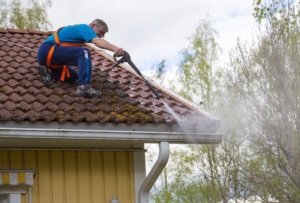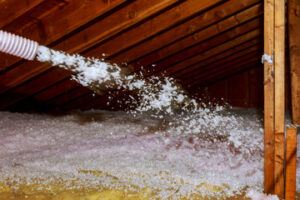
UV window tints offer more than just a stylish aesthetic, they also provide several benefits for you and your car’s interior. For example, UV Protection Tint For Your Car can help reduce glare and eye fatigue, making driving safer for you and your passengers.
Tints with moderate visibility are a good option for those who want to block UV rays without darkening their windows. They’re more affordable than metalized tints, which contain tiny metal microparticles that can interfere with electronics in your car.
Protection From UV rays
The sun’s UV rays are a serious threat to your health and your car’s interior. Prolonged exposure can lead to premature aging, sunspots, wrinkling, and in extreme cases skin cancer. Window tint blocks up to 99% of these dangerous rays. Window tint also offers glare reduction, allowing you to enjoy driving in bright conditions without having to suffer from blinding glare.
Additionally, window tint reduces solar heat transmission, making your vehicle a more comfortable place to spend long drives. The resulting decrease in the need to run your air conditioning, can also increase fuel efficiency.
While many people assume that all tint is the same, there are a wide range of options available. The best UV tint for cars comes in different shades, allowing you to create a look that complements your unique style. Whether you opt for a dark or light tint, all of our car window film products are engineered to minimize UV penetration and offer superior UV protection, reducing the risk of damaging your skin or the fabric of your vehicle’s upholstery.
When choosing the right UV window tint, consider your priorities. A common concern is fading of the vehicle’s upholstery and trim. A high-quality UV film can prevent this from occurring, preserving the beauty and comfort of your vehicle’s interior for years to come.
Additionally, a UV window tint can protect the electronic devices in your car from prolonged exposure to sunlight. This can prevent them from becoming damaged or unusable, such as cracked GPS screens and faded radio dials.
UV-blocking window tints are not only a practical solution, but they also add a layer of security and privacy to your vehicle. Depending on the shade you choose, a UV-blocking tint can obscure your vehicle’s interior, providing a level of privacy that can help to deter thieves from targeting your car. This is especially beneficial if you are travelling with children or pets in the backseat of your vehicle. In addition to protecting your passengers, a UV tint can also help to protect valuables from potential thieves in the event of a break-in.
Prevents fading and discoloration
When left unchecked, the sun’s UV rays can break down the molecular structure of leather and plastic materials, resulting in discoloration and fading over time. Fade-resistant tints act as a shield against these damaging rays, significantly mitigating the process of color degradation and extending the lifespan of your vehicle’s upholstery, dash components, and other interior accessories.
As a bonus, fade-resistant tints also block a significant portion of the sun’s heat, maintaining a cooler interior environment that reduces your dependence on air conditioning and fuel usage. This added environmental benefit can significantly lower your energy costs and overall carbon footprint.
In addition to preventing UV-related fading and discoloration, UV protection window tint helps to reduce the uncomfortable glare caused by sunlight or headlights. This enhanced visibility can make your driving experience more enjoyable, especially during long summer road trips or daily commutes.
Fade-resistant tints are designed to withstand a range of temperatures, allowing them to hold their shape and integrity even in extreme heat or cold. When paired with the right maintenance regimen, these tints can remain vibrant and functional for years to come.
One of the most effective ways to keep your car’s window tinting looking its best is by regularly cleaning it with a mild soap and water solution. It’s important to avoid using harsh chemicals or abrasive tools as these can scratch or damage the tint’s surface. Likewise, you should never use a cleaner containing ammonia as this can hasten the fading process.
As with any auto product, your tints’ longevity depends on the quality of the installation and regular care and maintenance. It is important to allow your tints sufficient time to cure after installation, depending on the tint type and prevailing weather conditions. Furthermore, you should refrain from rolling your windows down or cleaning them until this curing process is complete. Lastly, you should avoid attaching any stickers or decals to your car’s windows, as these can leave adhesive residue on the tint film and may damage it over time. Additionally, it is recommended to park your car in shaded areas whenever possible to protect it from the sun’s harmful rays.
Enhances Your Vehicle’s Aesthetics
If you’re thinking about adding tint to your vehicle, there are a variety of options to choose from. From classic tint to ceramic, there’s a variety of aesthetics and UV protection levels to suit your needs. Ultimately, it comes down to what’s most important for you-whether that’s privacy, heat rejection, or UV protection. Evaluate your priorities and consult a professional installer to find the perfect tint for your vehicle.
UV protection tint is a specialized film that’s affixed to your windows and acts as a barrier against harmful UV radiation. It obstructs UVA and UVB rays, which are known to cause skin cancer, wrinkles, and sunburns. High-quality UV protection tint can block up to 99% of these rays, significantly reducing the risk of skin damage and improving your driving experience by lowering uncomfortable glare levels.
Window tint has also been shown to be effective at minimizing fading and discoloration, which is a major benefit for your car’s interior. Over time, prolonged exposure to UV rays causes leather, plastic, and other fabric materials to fade, crack, or become unusable. UV-blocking window tints act as a protective shield against this gradual damage, helping to maintain the integrity of your vehicle’s upholstery and maintaining its value over time.
In addition to protecting your car’s interior, UV-protective window tints can help reduce the amount of air conditioning you need to use during hot weather. This can save you money on energy bills and reduce your carbon footprint, making it an eco-friendly investment. In addition, window tint is often a sought-after feature among prospective buyers, boosting your vehicle’s resale value.
If you’re interested in upgrading your vehicle with UV-protective window tint, contact XP Automotive Restyling today! Our experienced technicians offer precise installation of quality window tints that can boost your car’s appearance, safety, and functionality. To learn more about our services, please give us a call or fill out our online form. We look forward to hearing from you!
Increases Your Vehicle’s Value
Car tint is one of the few aftermarket modifications that can actually increase a vehicle’s value. It is a simple upgrade that adds privacy and protection, and it is often the first modification that prospective buyers notice.
UV-blocking window tints reduce the effects of prolonged exposure to harmful ultraviolet radiation, which can cause fading and cracking on interior surfaces over time. This helps protect both the driver and passengers from the dangers of sun damage, while preserving interior materials and maintaining resale value.
As a bonus, window tints can help reduce the need to use air conditioning, which can result in lower fuel consumption and reduced greenhouse gas emissions. This can also make your ride more comfortable for the occupants, which will increase the overall quality of the driving experience.
The right tint shade can provide a unique aesthetic that will complement your vehicle’s styling, and you can choose from a range of shades to suit your style. Whether you prefer a subtle smoke tint that blends with any color, or you want to stand out with a reflective finish, the options are endless. And the high-performance films offered by Sho-MeTint can be combined with other products like paint protection film or car wraps to create a customized look that will impress potential buyers.
While the advantages of window tint are undeniable, it is important to ensure that your chosen tint meets all state and local regulations. Non-compliance can lead to fines or even the removal of the tint. Luckily, a professional window tint installer can help you choose the right shade to meet your needs and stay within your region’s legal limits.
Whether you want to improve the safety and comfort of your vehicle, or you just want to increase its resale value, there are few upgrades that can compare to the benefits of UV protection tint. Contact a specialist from your local Madico film dealer to find the best shade for your home or car, and enjoy knowing that you are making a smart investment.








